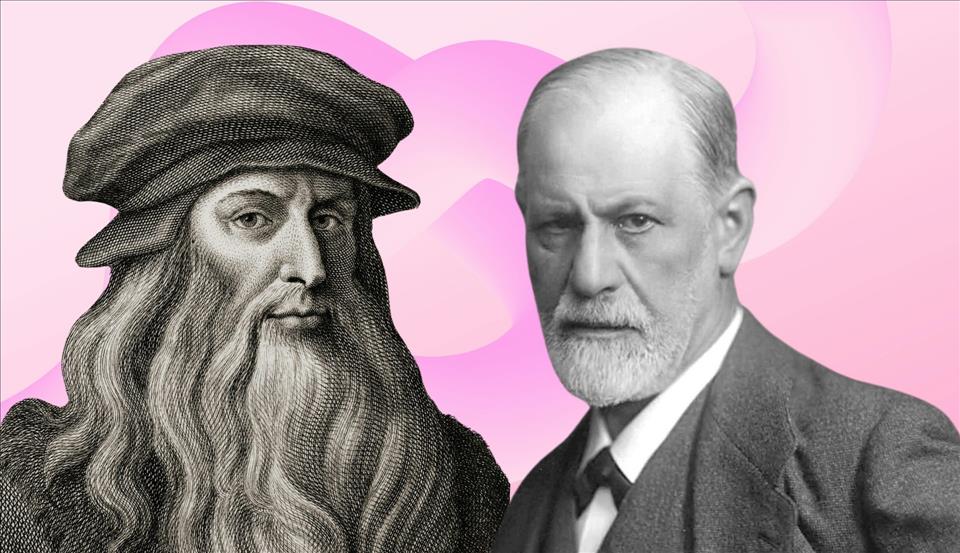
How Sigmund Freud Attempted To Solve The 'Riddle' Of Leonardo Da Vinci's Genius
Writing in 1915, the psychoanalyst Alix Strachey wrote , to explain Freud's theory, that“in sublimation, a man deals with his homicidal impulses not by turning pacifist but by becoming a criminal lawyer, or a war correspondent or a crime reporter or a writer of blood-and-thunder books”.
It is perhaps not surprising that Freud himself saw the roots of culture as sexual, given the prominence of sexuality in his account of the mind. But what is surprising is how much trouble this idea of sublimation gave Freud. It's that troublesomeness that first aroused my interest in this neglected idea. I spent a year exploring it which culminated in my new book, Understanding Sublimation . What I discovered is that Freud's theory of sublimation is all about riddles, and trying to solve them.
This becomes clear in Freud's major discussion of the idea – an essay he wrote in 1910 about one of the greatest riddles of art history, Leonardo da Vinci. Freud wanted to know how the Renaissance polymath combined supreme artistic accomplishments with a technological imagination that seemingly anticipated modern science and engineering. He also asked: Why did he leave many of his paintings unfinished, and why are his most famous works still considered so enigmatic and strange?
Read more: Leonardo da Vinci's mother might have been a slave: here's what the discovery reveals about Renaissance Europe
Freud's obsession with da Vinci merged with his wider interests in how the unconscious memory of a child's earliest relations to others (always for Freud charged with sexuality) could either energise or hinder creativity later in life. Because da Vinci left such detailed note s about his own chaste and self-disciplined life, Freud felt justified in his assumptions: here was someone whose erotic life had morphed into intellectual and creative activities.
Freud thought this might be why da Vinci had such extraordinary cognitive and artistic powers, but also why his work is so strange and hard to decipher.
What Freud found most striking about da Vinci was his combination of scientific problem-solving and artistic production, above all because there was, he thought, an essential conflict between these activities.
Freud's own work with his patients would often reveal these kinds of mental conflicts or tensions, and his long process of psychoanalysis would trace them back to the complexity of the person's early life.
In the case of da Vinci, Freud starts with a moment when the artist was prevented from completing one of his major projects – painting the Battle of Anghiari in a public building in Florence – by a technical experiment that went wrong.“Here it seems,” Freud wrote ,“as if an alien interest – in experimentation – at first reinforced the artistic one, only to damage the work later on”.
This emphasis on incompatible drives or impulses is central to Freud's attempt to solve the riddle of da Vinci. What is key is the phrase“an alien interest”. Da Vinci's conflict between painting and experimentation is imagined by Freud as the uneasy cohabitation in the psyche of self-hood and a disruptive alien invader. What he meant by this is that while the ego thinks it is master of its own house, the psyche also comprises desires that go beyond personal identity, that seem to come from somewhere else.
Mona Lisa, by Leonardo da Vinci (c.1503). Freud wrote about the Mona Lisa's enigmatic smile. Louvre Museum
When it comes to the famous paintings that have puzzled art critics for centuries, Freud sees da Vinci again dramatising this split between the creative self and some unknown, enigmatic impulse. Mona Lisa's famously enigmatic smile comprises, he writes :“the contrast between reserve and seduction, and between the most devoted tenderness and a sensuality that is ruthlessly demanding – consuming men”.
Freud sees the doubleness of da Vinci's portrayal of women (as both Madonnas and whores) as unconsciously linked to the mother-child relationship, especially in early care and breastfeeding. The sublimation of that primal sexual relation into art, Freud thinks, makes the paintings enigmatic, even uncanny (many art historians have been haunted by da Vinci's paintings).
What is spooky is that the beauty and tenderness of the image is made ambiguous by something else, an“alien” element suggesting erotic passion, even destructive desire. There is, according to Freud, a radical ambiguity at the very root of human subjectivity: if our early lives are full of loving care, they are also full of enigmatic desire.
Freud's answer to the riddle of da Vinci, then, was not some Dan Brown-like key to a mystical Renaissance symbolic code. It was a wild speculation, either inspired or delusional, that saw in his work, with its fantastic inventiveness, an enigmatic ambiguity that threatened the very possibility of coherent artistic expression.
It is this enigmatic challenge to interpretation that makes the Freudian idea of sublimation more than just a banal sense of sexuality as useful“energy” for other activities. For Freud, what da Vinci shows us in the riddle of his painting has a universal significance precisely because it goes beyond a single, closed meaning, and so opens us to our own fundamental unfinishedness.
Looking for something good? Cut through the noise with a carefully curated selection of the latest releases, live events and exhibitions, straight to your inbox every fortnight, on Fridays. Sign up here .

Legal Disclaimer:
MENAFN provides the
information “as is” without warranty of any kind. We do not accept
any responsibility or liability for the accuracy, content, images,
videos, licenses, completeness, legality, or reliability of the information
contained in this article. If you have any complaints or copyright
issues related to this article, kindly contact the provider above.


















Comments
No comment